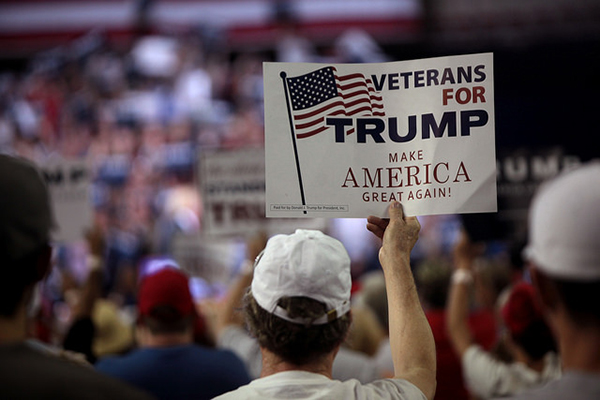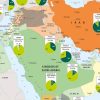
The causes underlying Donald Trump’s arrival in the White House exactly one year ago are still subject to debate. But these causes, which are manifold and complex, have a bearing on his impact, on his politics, which have taken and indeed are taking their time to materialise. One example will suffice: he is the first US President not to have honoured a single foreign leader with a state banquet in the White House in his first year of office. “America First”, one of his campaign slogans, which is being fulfilled in political decisions, is translating into a clear US withdrawal from the international liberal order that Washington had been promoting since before the end of the Second World War.
It is worth recalling that Trump won the electoral college vote in November 2016, but not the popular vote. Hillary Clinton beat him by more than 2.8 million votes, but lost in various key states. The Trump campaign was better at harnessing the computer-based canvassing techniques that had been pioneered eight years earlier by Barack Obama’s team. This involved a very shrewd use of the news media (Fox, Breitbart News, etc.) and the social media, exploiting the ideological bubbles in which people live, and that Trump has continued stoking and using once installed in the White House. Trump’s politics are succeeding in undermining the credibility of the traditional mainstream media, particularly among his supporters, but also further afield.
Trump sought the support of those overlooked –incredibly– by the elites, including Democrat centrists: white, male voters from the lower-middle and working classes whose incomes have stagnated for decades. These are also people who have been overlooked by globalisation and the technological revolution, by the so-called fourth industrial revolution. Only Bernie Sanders made an effort to reach out to them, but with little credibility.
Carl Benedikt Frey, Thor Berger and Chinchih Chen, from the Oxford Martin School, have conducted a detailed analysis of the relationship between industrial automation and the US election results. They conclude that support for Trump was especially high in metropolitan districts with many poorly-educated males employed in routine jobs, the first victims of the digital and automation revolution. The study argues that a 5% increase in the proportion of jobs that workers have lost to automation is associated with an increase of 10 percentage points in the vote for Trump in the districts concerned. And this is despite the fact that during and even after his campaign Trump said very little about technology. At all events it was a vote against the status quo, a vote pervaded by protectionism, the rejection of immigration and the advocacy of “American First”.
In a similar vein, David Autor et al. have shown how, well before Trump, districts with labour forces more vulnerable to Chinese imports rejected relatively moderate legislators at the polls in favour of more radically protectionist alternatives; in other words that commercial liberalisation and globalisation have aggravated political polarisation in the US (and other societies).
It is also worth pointing out that, although it greatly favours the wealthy and corporations and generates more inequality, the Trump tax reform affects the lower social strata too –in a country where the rich are not ill-perceived– although if it does not succeed in having a real impact on wages, the President is set to suffer rather more than just a setback in the congressional elections this November. The delays besetting his ambitious public works plans, and other initiatives like the Mexican wall, even though Trump is determined to build it, do him no favours.
The economy is not the be all and end all, however. Among the causes, and effects, of Trump, is the cultural factor, the cultural backlash instigated by the dispossessed and many others. It is the reaction of some sectors –including female ones– to a new role for women in detriment to men, to the new role of minorities such as African-Americans, Hispanics and the LGBTI community, among others, and a defence of the white, Protestant identity, which nurtures the rejection of immigration as championed by Trump. The sociologists Ronald F. Inglehart and Pippa Norris have used data to investigate this cultural and identity factor in the case of Brexit and of Trump (going back to before the election result).
This encourages a degree of social regression, and also a Jacksonian brand of populism –a term coined by the historian Walter Russell Mead after the first populist US President, who held office between 1829 and 1837– and also involves the country turning inward on itself. It is a populism that is only ‘intermittently’ concerned with foreign policy, and certainly not with promoting democracy and human rights beyond its borders, as the neoconservatives or the Wilsonians once advocated. This type of leadership does not rule out war or the use of force –and certainly not the right to bear arms, quite the reverse– when it deems it necessary. Indeed, in April Trump authorised a missile attack on a Syrian base in response to the regime’s use of chemical weapons, although it was not part of a broader vision of the situation.
The Trump presidency has fallen behind schedule with its programme, possibly, among other reasons, because as Michael Wolff argues in his controversial book Fire and Fury, it had not been expecting to win and governs chaotically. Of course, Wolf does not explain how or why Trump reached the White House. At all events, whether dealing with a full-bore or semi-bore Trump, and even in his absence, the causes of Trump –of which only some have been addressed here– continue unabated. The fact is that Trump still seems better attuned to his grassroots than his opponents are to theirs. According to research reported by The Atlantic, however, they could be starting to turn against him after a year in the White House.


